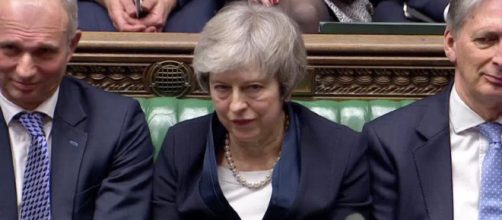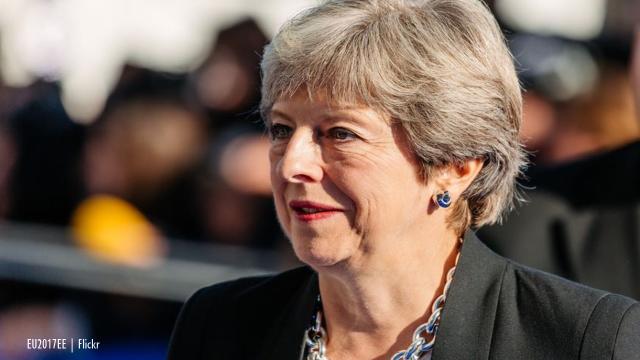On Tuesday 15th January 2019, Theresa May put forward her 585-page proposed withdrawal agreement and 26-page declaration on future relations with the EU to a vote in parliament, suffering the greatest defeat in democratic history. In a 432 – 202 vote, the withdrawal agreement was overwhelmingly rejected, with both Leave and Remain campaigners managing rare collusion in agreement that the proposed deal was not in the interests of the UK.
The BBC noted that among some of the most critiqued aspects for the rejection was controversy surrounding the Northern Irish backstop agreement, proposing a hard border between the Republic of Ireland and Northern Ireland: something the UK was reluctant to agree to.
There were also concerns regarding the vagueness of some of the other terms, suggesting that the agreement left too much power in the hands of the EU to enforce terms upon us without the UK having much of a say at all.
What was the lead up to this?
Theresa May triggered Article 50 in March 2017, giving us two years to agree on withdrawal terms with the EU. Despite this, much has been uncertain about what sort of continued relationship we actually want with Europe, and it feels to many people as if little has progressed since then.
In December, May proposed an agreement to parliament but withdrew the vote due to assurances that it would not pass. Since then, May has been criticised for not making sufficient progress in the negotiations, and the document which was presented to parliament this Tuesday bore too great a resemblance to the original proposal to have any more success.
Following this historic defeat, the question remaining on everyone’s lips is ‘what next’? A question very few seem prepared, or even able, to answer. In truth, there are a few possible next steps which could be taken and parliament will need to make a decision on how they wish to proceed in the next few days.
No Deal Brexit
As Article 50 has already been triggered, the UK is due to leave the EU on 29 March 2019 with or without a deal. Without any further progress or another agreement being negotiated and approved then the default position will be for the UK to leave Europe on the agreed date with no deal.
Despite support for a No Deal Brexit [VIDEO] from hard Brexiteers, No Deal is widely considered to be a bad idea due to the uncertainty it would raise for both the UK and EU.
If no deal is reached between the UK and EU, the UK will leave on 29 March and all relationships with the EU will end with no proposal for a continued relationship.
The UK would revert to World Trade Organisation rules on trade and would be required to pay the EU’s external tariffs if we needed to trade with them. This would be awful for British businesses and would almost definitely cause the price of goods to increase as the importing costs rise. Our exports could also suffer as we may be required to obtain new EU authorisation and certification to sell our products to European countries.
A commonly cited reason to leave the EU was due to immigration. Although No Deal would allow the UK to set our own immigration and border controls, so too can the UK set restrictions for Brits travelling abroad.
This would be likely to heighten boarder delays as checks become stricter.
The rights of the 1.3 million Britons living in European countries and the 3.7 million Europeans in Britain to remain in their country of residence would be incredibly uncertain and flights to/from EU countries could be grounded until border control changes are confirmed.
Channel 4 notes that this issue of borders will also be incredibly contested in regards to the border between Northern Ireland and the Republic of Ireland, with pressures for a hard border should no deal be reached agreeing on an alternative. Anyone remotely familiar with the history of Ireland and the Good Friday Agreement will be well aware of why this is something government is so desperate to avoid.
Second vote
If it’s seen that MPs’ attitude to the proposed agreement is adequately changed following minor adjustments then the Speaker could agree to a second debate. That said, seeing as Mrs May has already bagged herself an additional month on when this proposal was meant to be put to a vote, this seems fairly unlikely in the current climate, particularly
Renegotiation
If minor changes are not enough to sway MPs, May could look to the EU for a complete renegotiation over the agreed Brexit terms. Although this might seem good in theory, it would require all EU states to agree to renegotiation and will almost certainly require an extension to Article 50 as we would be unlikely to be able to construct an entirely new agreement within the next two months after two years of little progress.
Second referendum
Rather than renegotiating terms, the government could choose to post a second referendum to gauge the will of the British public now that more information has come to light on Brexit.
Although hard Brexiteers are unlikely to want this and parliament seems reluctant to put the EU withdrawal to another vote, there is a lot of desire for this as people now have a better understanding of some of the implications of Brexit. There’s also the issues raised in the recent TV drama “Brexit: An Uncivil War” regarding the legality of some of the Leave campaign which would be interesting to look at in more detail to see whether this sways the vote at all.
That said, another referendum won’t be straightforward.
There are laws around referendums and new legislation will need to be written to allow this to happen.
How does a referendum work?
In order to call a referendum, the Electoral Commission must consider and advise on the phrasing of the question, which is then defined in legislation. If/when the legislation is passed, there must be a statutory “referendum period” before a vote can take place, which would take us far past the deadline of 29 March, even if the process started today.
Even if a second referendum is called, there’s no guarantee that the outcome would change, so we may end up in exactly the same position with yet more time past and still no agreement in place. For this reason, the government must have a plan for both a remain or leave vote so they are prepared whatever the outcome.
General election
Although Mrs May doesn’t have the power to call a general election by herself, she could ask MPs to vote for one as she did in 2017. This could help her secure a political mandate for her deal or even break the deadlock by allowing the public to put another party in power for a fresh view.
This would also require a request to extend Article 50 as an early general election would require 2/3 MPs to vote in favour, with a minimum of 25 working days following this vote before the election could take place.
Vote of no confidence
Although Theresa May recently survived a Vote of No Confidence from her own party and is immune from a further vote for the next two years, Jeremy Corbyn and the Labour party triggered a Vote of No Confidence against the government.
The Vote of No Confidence was placed against Theresa May’s government on Wednesday 16 January. May’s government won by just 19 votes: 325 to 306, many of whom voted against her deal less than 24 hours previously.
Should this motion be voted up by a majority of MPs this starts a 14 day countdown to see whether the current government or an alternative government is able to win a Vote of Confidence, otherwise a new general election would be called after 25 working days.
No Brexit
Following a ruling by the European Court of Justice (whom many Brexiteers no longer wish to be bound by), it was found it would be legal for the UK to revoke Article 50 without the need for EU agreement; effectively cancelling Brexit entirely.
Although this might sound like a good scenario for pro Remainers, this actually wouldn’t be an ideal situation for the government, as cancelling Brexit without a further public vote calling for this would call the UK’s democracy into question, particularly now that we are so far down the path.
So what next?
Although the government has been under pressure to announce their ‘Plan B’ following the failure of May’s proposed withdrawal agreement, nobody seems willing or able to announce one. Given the narrow survival of the government following the Vote of No Confidence, the only thing we know for sure is that the Conservative / DUP government will remain in power, responsible for deciding what avenues to explore next.
That said, May could still choose to resign and allow another leader to take over, however, based on her recent comments and commitment to the negotiations, it looks unlikely that she will do this. For better or for worse, it’s yet to be seen. Whatever happens next, we’re in an interesting stage of British politics, with some of the most important decisions in a generation being made over the next couple of months. Fingers crossed it works out.



